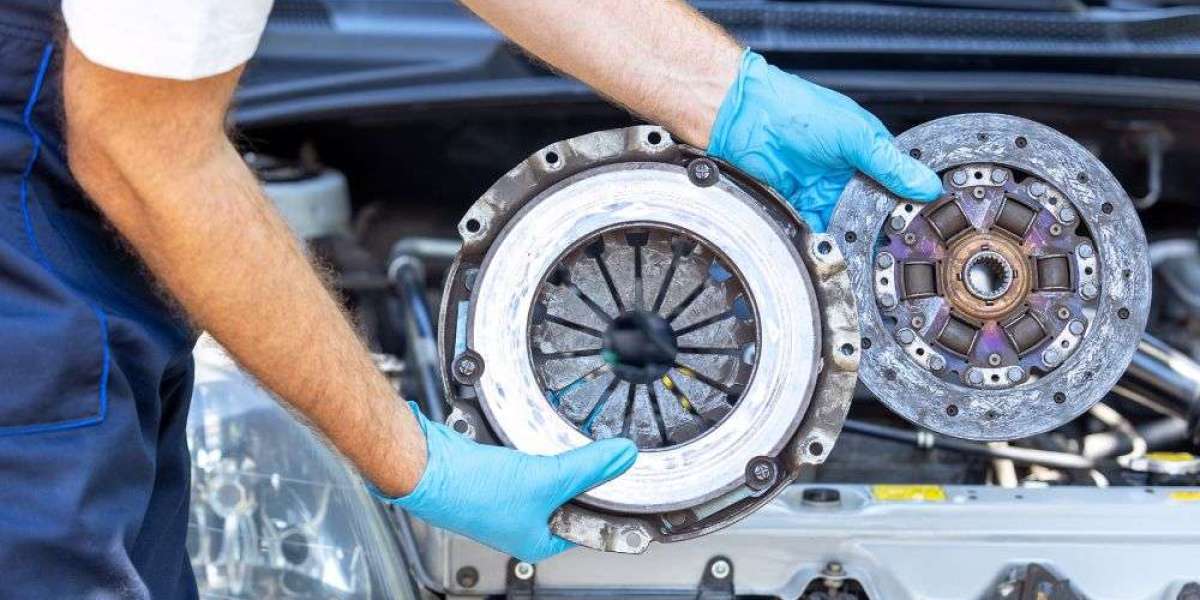The clutch is a vital component in vehicles, especially those with manual transmissions. It enables the smooth engagement and disengagement of the engine's power to the transmission, allowing you to change gears effectively. Over time, like any mechanical part, the clutch wears out and may require repair or replacement. Understanding the costs involved in clutch repairs can help you budget and avoid any unpleasant surprises. This guide will break down what you should expect to pay for clutch repairs, factors that affect the cost, and tips to save money on this essential service.
Understanding Clutch Repairs
Clutch repairs typically involve replacing the clutch disc, pressure plate, and release bearing. In some cases, other components like the flywheel or hydraulic system may also need attention. The extent of the repair can vary, influencing the overall cost.
Average Cost of Clutch Repairs
The cost of clutch repairs can vary widely depending on several factors, including the make and model of your vehicle, labor costs, and the extent of the damage. Here’s a breakdown of what you can generally expect:
- Basic Clutch Replacement:
- Cost Range: $500 to $1,200
- What’s Included: This typically includes replacing the clutch disc, pressure plate, and release bearing. Labor costs can vary depending on the complexity of the job.
- Flywheel Replacement:
- Cost Range: $300 to $600 (in addition to clutch replacement)
- What’s Included: If your flywheel is damaged or excessively worn, it may need to be resurfaced or replaced. This is an additional cost on top of the basic clutch replacement.
- Hydraulic System Repair:
- Cost Range: $150 to $400
- What’s Included: This involves repairing or replacing the hydraulic components that operate the clutch, such as the master cylinder or slave cylinder.
- High-Performance Vehicles:
- Cost Range: $1,200 to $2,500+
- What’s Included: High-performance or luxury vehicles often have more complex clutch systems, and the parts themselves can be more expensive. Labor costs also tend to be higher for these vehicles.
Factors That Affect the Cost of Clutch Repairs
Several factors can influence the overall cost of clutch repairs. Understanding these can help you make informed decisions and possibly save money.
1. Vehicle Make and Model
The make and model of your vehicle play a significant role in determining the cost of clutch repairs. For instance, common models with easily accessible parts will generally cost less to repair. On the other hand, rare, luxury, or high-performance vehicles often have more expensive parts and require specialized labor, driving up the cost.
2. Labor Costs
Labor costs can vary depending on where you take your vehicle for repairs. Dealerships tend to charge more for labor compared to independent mechanics, but they also offer specialized knowledge of specific vehicle brands. The complexity of the clutch system in your vehicle can also affect labor costs; some clutches are easier to access and replace than others.
3. Extent of the Damage
If your clutch has been slipping or showing signs of wear for a while, additional components may need to be replaced, such as the flywheel or hydraulic system parts. The more extensive the damage, the higher the repair costs.
4. Location
Geographical location can also affect the cost of clutch repairs. Urban areas with a higher cost of living generally have higher labor rates. Conversely, in rural areas, labor might be cheaper, but the availability of parts could be limited, potentially leading to longer repair times and higher costs.
5. OEM vs. Aftermarket Parts
Original Equipment Manufacturer (OEM) parts are made by the vehicle's manufacturer and tend to be more expensive. Aftermarket parts are produced by third-party companies and are often less costly. However, the quality can vary, so it's essential to weigh the pros and cons before choosing.
Tips to Save Money on Clutch Repairs
Clutch repairs can be expensive, but there are ways to minimize the cost. Here are some tips to help you save money:
1. Get Multiple Quotes
Don’t settle for the first estimate you receive. Shop around and get quotes from multiple mechanics or repair shops. This will give you a better idea of the going rate in your area and help you find the best deal.
2. Consider Independent Mechanics
While dealerships offer brand-specific expertise, independent mechanics can often perform the same repairs at a lower cost. Make sure to choose a reputable mechanic with good reviews to ensure quality work.
3. Ask About Aftermarket Parts
If cost is a significant concern, ask your mechanic about using aftermarket parts instead of OEM parts. While OEM parts are often recommended for their quality, reputable aftermarket parts can provide a good balance between cost and performance.
4. Maintain Your Clutch
Preventive maintenance can help you avoid costly repairs. Learn to recognize the signs of a failing clutch, such as slipping, difficulty shifting gears, or unusual noises, and address issues early. Regular maintenance, like checking and topping off the clutch fluid, can also prolong the life of your clutch.
5. Consider a Warranty
Some repair shops offer warranties on parts and labor. While this might increase the upfront cost, it can save you money in the long run if something goes wrong shortly after the repair.
When Should You Replace Your Clutch?
Even with regular maintenance, clutches wear out over time and will eventually need to be replaced. Here are some signs that it might be time to consider clutch repairs or replacement:
- Slipping Gears: If your vehicle revs up without accelerating, it’s a sign that your clutch is slipping and likely needs to be replaced.
- Difficulty Shifting: If you find it hard to change gears or hear grinding noises when you do, it’s a sign of clutch wear.
- High Clutch Pedal: If the clutch pedal feels unusually high before it engages, it’s a sign that the clutch is worn out.
- Spongy or Soft Clutch Pedal: A spongy pedal can indicate a problem with the hydraulic system, which may need to be repaired or replaced along with the clutch.
Conclusion
Clutch repairs can be costly, but understanding the factors that affect the cost and knowing how to save money can help you manage the expense. Whether you drive a common sedan or a high-performance vehicle, regular maintenance and timely repairs are key to keeping your clutch—and your vehicle—in good condition.
By recognizing the signs of a failing clutch and taking action early, you can avoid more extensive damage and save money in the long run. And when it’s time for repairs, be sure to get multiple quotes, consider independent mechanics, and weigh the pros and cons of OEM versus aftermarket parts. With these strategies, you can keep your vehicle running smoothly without breaking the bank on clutch repairs.


